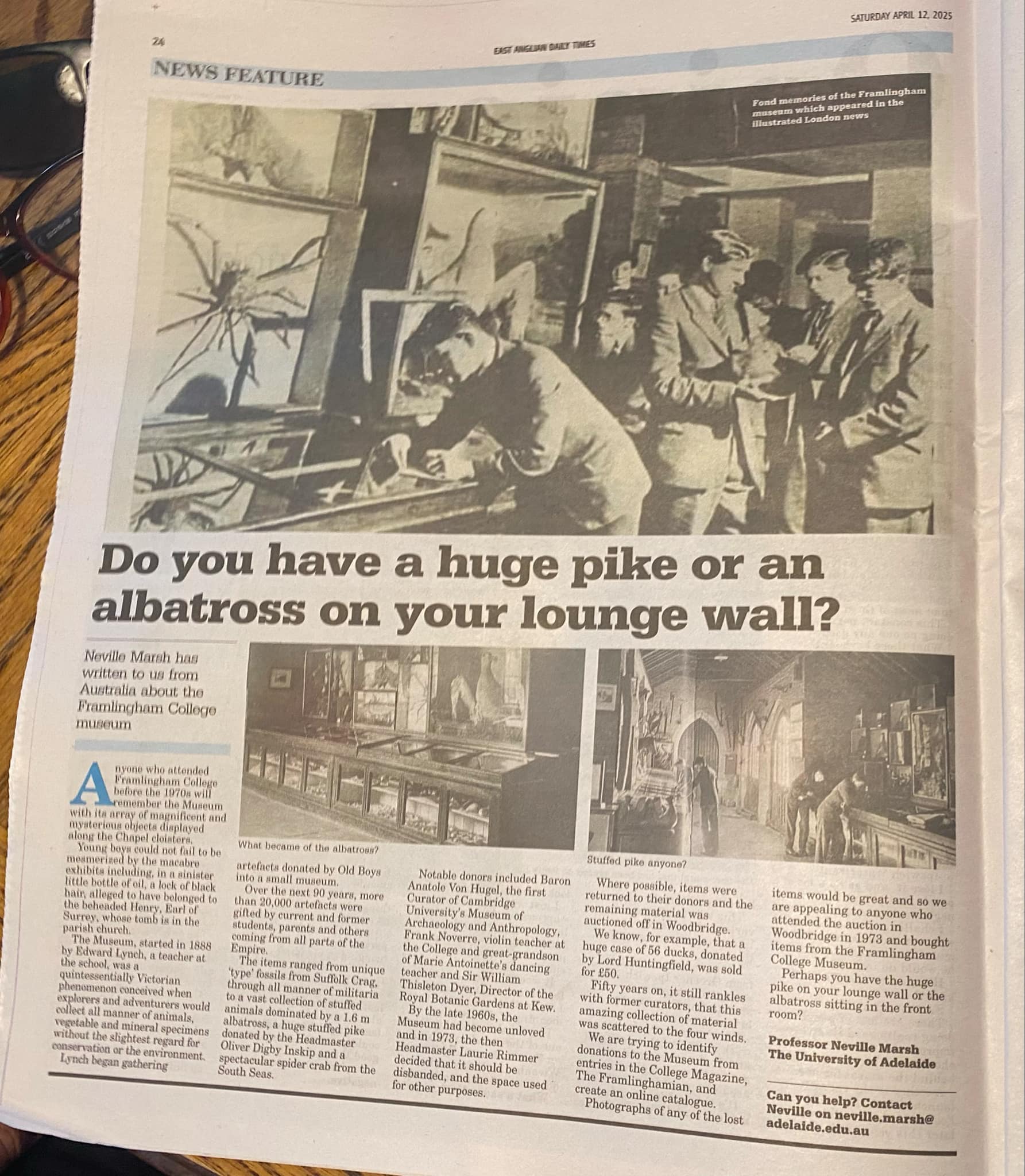
Professor Neville Marsh (S53-61) has spent the last few months thoroughly researching what used to be the College Museum. This work will shortly be completed and it will all then be published in a new area of the website.
In the meantime, he has today had a full page article published in the EADT today (12 April 2025) and the following is the words from that article. If you can help Neville in any way then please email him neville.marsh@adelaide.edu.au
THE TERRIFYING SPIDER CRAB AND AWESOME PIKE
Anyone who attended Framlingham College before the 1970s will remember the Museum with its array of magnificent and mysterious objects displayed along the Chapel cloisters. Young boys could not fail to be mesmerized by the macabre exhibits including, in a sinister little bottle of oil, a lock of black hair, alleged to have belonged to the beheaded Henry, Earl of Surrey, whose tomb is in the parish church.
The Museum, started in 1888 by Edward Lynch, a teacher at the school, was a quintessentially Victorian phenomenon conceived when explorers and adventurers would collect all manner of animals, vegetable and mineral specimens without the slightest regard for conservation or the environment. Lynch began gathering artefacts donated by Old Boys into a small museum. Over the next 90 years, more than 20,000 artefacts were gifted by current and former students, parents and others coming from all parts of the Empire.
The items ranged from unique ‘type’ fossils from Suffolk Crag, through all manner of militaria to a vast collection of stuffed animals dominated by a 1.6 m albatross, a huge stuffed pike donated by the Headmaster Oliver Digby Inskip and a spectacular spider crab from the South Seas. Notable donors included Baron Anatole Von Hugel, the first Curator of Cambridge University’s Museum of Archaeology and Anthropology, Frank Noverre, violin teacher at the College and great-grandson of Marie Antoinette’s dancing teacher and Sir William Thisleton Dyer, Director of the Royal Botanic Gardens at Kew.
By the late 1960s, the Museum had become unloved and in 1973, the then Headmaster Laurie Rimmer decided that it should be disbanded, and the space used for other purposes. Where possible, items were returned to their donors and the remaining material was auctioned off in Woodbridge. We know, for example, that a huge case of 56 ducks, donated by Lord Huntingfield, was sold for £50.
Fifty years on, it still rankles with former curators, that this amazing collection of material was scattered to the four winds. We are trying to identify donations to the Museum from entries in the College Magazine, The Framlinghamian, and create an online catalogue. Photographs of any of the lost items would be great and so we are appealing to anyone who attended the auction in Woodbridge in 1973 and bought items from the Framlingham College Museum.
Perhaps you have the huge pike on your lounge wall or the albatross sitting in the front room.

Comments
Join the conversation
Log in to add your comment
0 comments